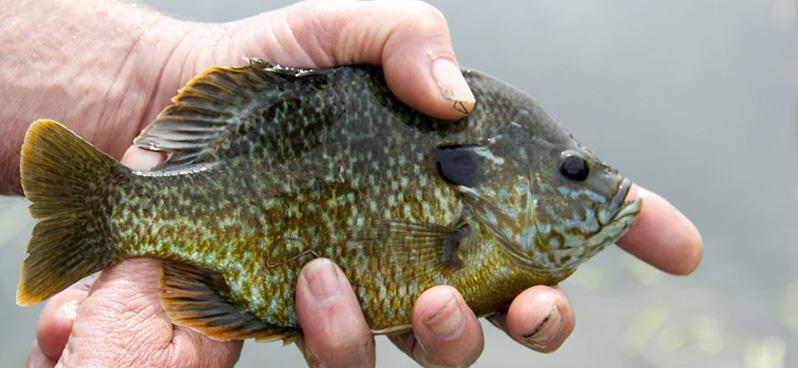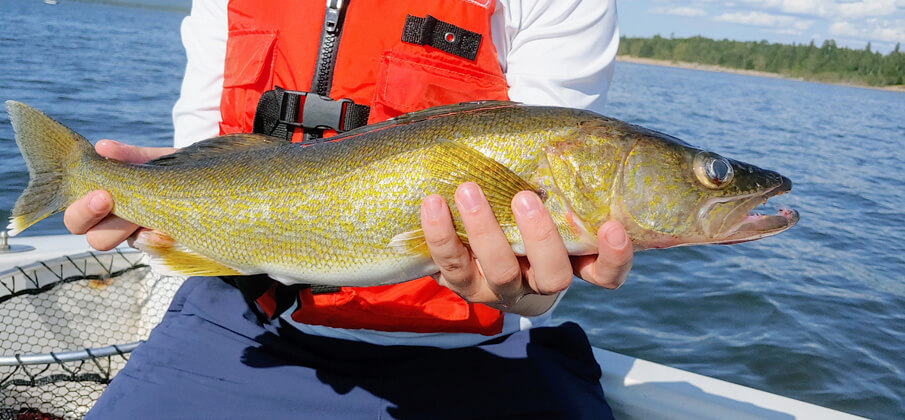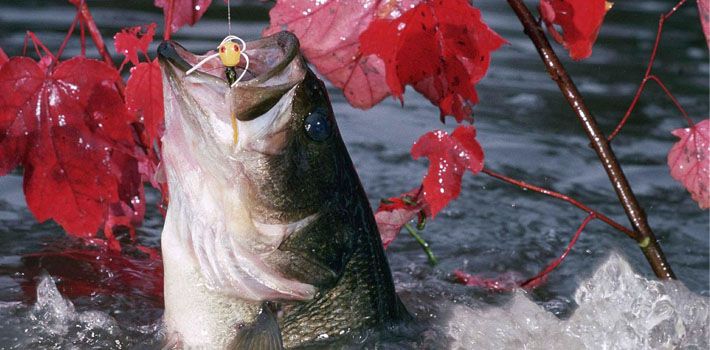Bluegill fishing is quite popular as they provide plenty of action and have a delicious taste.
Many anglers catch bluegill with their young kids as it is an excellent way to get their children hooked on the sport! For youngsters, the first ever fish they end up catching is the bluegill.
So, you're interested in bluegills but you're not sure where to start. Not to worry, this article will teach you how to catch bluegill in no time!
The Rod, Reel, and Line to Catch Bluegills
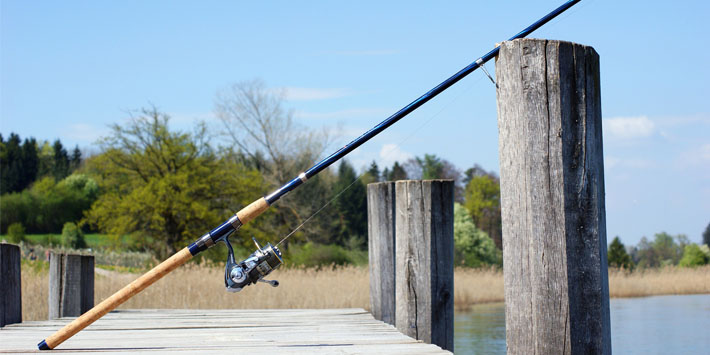
Rod
While you can catch a lot of bluegill with fly fishing, this article will focus on the spinning rod technique as it's extremely easy to pick up and newbie friendly.
Due to the bluegill's small size, you need a 5ft-7ft ultra-light power rod with slow (Some companies use the same labels for action and power. So, slow action is the same thing as light action) or medium/moderate action.
Reel
With the above spinning rod, the best combination is an ultralight spinning reel. This will allow you to cast small baits and lures farther which sometimes can be the difference between fish or no fish.
Both closed and open-faced reels work perfectly.
Line
Since bluegills are small fish, a 2lb-4lb test line is perfect. As we said above, the light line (with the help of an ultralight spinning reel) allows you to cast farther than if you're using a heavier line.
The Bait and Lures to Catch Bluegill

The best way to catch bluegill is with bait but they will often go for lures as well.
When choosing your baits and lures, you must remember that bluegills have small mouths so use small bait, hooks, and lures.
Use number 6 to 8 hooks. Anything larger is going to make it hard for the fish to get hooked.
Bait
The best baits for bluegill are nightcrawlers, earthworms, crickets or grasshoppers. Don't hesitate to use them if you can get them.
Lures
In addition to live baits, you may also use queasy and imitate lures. They also work great in most situations and in different seasons.
Regardless which lure you go with, always move them slowly as bluegill usually spend some time observing lure before striking. Therefore, fast-moving lures are usually ignored.
Jigs
They are the best lure to entice bluegills instantly. Go with jigs with 1/100 to 1/33-ounce heads and around 1inch bodies. A good rule of thumb is to use dark and bright colors on dark and bright days respectively.
Spinners
Use small spinners for bluegill. They are best for long rocky points and open water areas such as gravel-bottom spawning beds. If you use them with proper technique, they can also be used to fish in the sparse brush, alongside woody cover and weed tops like trees and stumps.
Mini-Plugs
These are high bluegill catchers. The mini plugs of around 1 to 2 inch imitate natural bluegill forage like small crayfish, grasshopper or tiny fish.
Square Bill Crankbait
Bluegills spends a lot of time in shallow water and near heavy cover hence square bill is an ideal option to coax a bite. It easily tempts them and a great choice to boat plenty of bluegills at once.
Bluegill Fishing the Different Seasons

Spring
This is a great time for bluegill fishing in shallow areas of rivers and lakes. They’re here to spawn and are quite aggressive because of it.
If you’re at a clear water lake you can easily see their beds. Every bed comprises individual nests which are made by a particular bluegill. In rock or sandy bottoms, they may appear discolored.
Use a bright lure with slow movement to catch the attention near these nests.
Summer
This is a good time to catch some large size and quality bluegill. After spawning, these fish travel to deeper water for feeding. The best depth is around 10 – 15 feet. Look for weed beds and similar structures.
Use grubs, crickets or grass shrimp to catch bluegill during summer. To catch big fish, troll or cast a good combination of lures and baits in the deep water.
Fall
During the fall season, bluegills generally make a move. Typically, they might travel to mid-depths that are close to their spawning site. Being a predictable fish, you may find them near weeds, sunken logs or boulders. Here you can get some good quality fish. Use lures like jigs and especially night crawlers to boat plenty of bluegills in the shortest span of time.
As the weather cools down during fall, the big fish come to shore near the man-made structures and vegetation. If you find heavy rain or wind during fishing, use a bit heavier lure or flies to overcome the wind.
Winter
During the winter season, the bluegills move into deep water. So look for depths around 20 feet, however, depending on the river/lake, even a few feet may make a big difference. It’s good to follow the fishing reports before leaving for your fishing trip. This will help you to hunt at the right spot.
Bluegill fishing can be plenty productive during winter if you find it offshore or wait for these small fish to come inshore during the afternoon. Use natural baits in winters as they are less aggressive with low metabolism during this period.
Fishing Techniques

So we know that you’ll likely find your bluegills in shallow water with plenty of vegetation and hiding spots. But what techniques do you have to use to catch them?
Well, we’ve already talked about which tools and lures you should use. However, there’s more to fishing than choosing the best rod and bait for the job.
Naturally, you also have to use the right technique. Let’s talk about 3 of the most useful fishing techniques for catching bluegills.
Float/Bobber Fishing

Float fishing is a technique that involves adding a float or a bobber near the end of your fishing line. That allows you to control the depth your bait sinks to, as the bobber will always be on the surface of the water.
When it comes to bluegills, this technique is particularly helpful for several reasons:
Even though some people think that using a bobber to catch bluegills is a bit of a cop-out, float fishing is a completely legitimate technique. In fact, many experienced anglers carry all sorts of bobbers in their tackle boxes.
So, if you decide to try this fishing technique, you’ll have to add bobbers to your fishing trip shopping list. Fortunately, you’ll have many bobber styles to choose from.
You could get the round ones or cigar floats made of styrofoam or plastic. More expensive options, such as slip bobbers and spring floaters, are made of balsa wood.
Drop-Shotting

Like float fishing, the drop shotting technique ensures that your lure doesn’t touch the bottom of the lake. However, in this case, we’re not making sure that our hook can’t sink.
Instead, you would tie an 8-inch leader to your hook and attach a 1–3-ounce weight to the end of your leader. Then, when you add your bait to the hook, it would actually be about 8 inches away from the bottom.
If you want to try out this technique, you should use a medium or a lightweight rod that’s going to be easy to handle. When you cast your line, you’ll want to have a smooth arch and allow the weight to hit the bottom slowly.
Make sure that your line is taut once the weight hits so your bait doesn’t sink too. If you don’t catch any fish in a minute or two, gently lift your rod with your elbow — if you feel no resistance, reel in the line a bit.
This technique is mostly about patience. You need to be slow and deliberate with your movements since you don’t want to spook the fish by jerking the bait around.
Cast and Retrieve
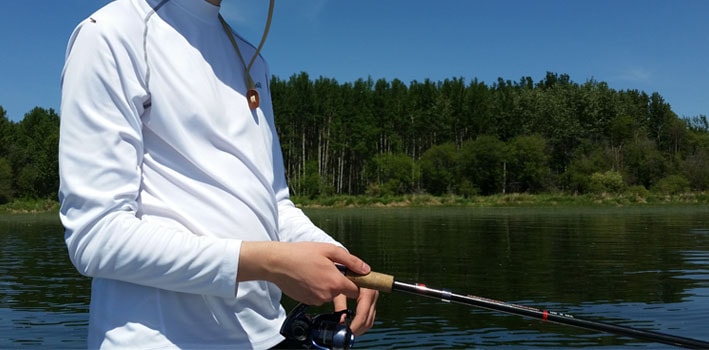
The cast and retrieve fishing technique is one that most anglers are familiar with. However, that name is admittedly confusing: haven’t we been casting and retrieving our lines this whole time?
Well, in this case, that means something a bit different. Basically, the retrieving part is the unique thing about this technique.
First of all, you need to get a lure to try this method. Now, cast your lure out and let it fall wherever you need it to be. Rather than letting the lure sit, you’ll want to start reeling your line in almost immediately.
Play with the retrieve speed to find that sweet spot but remember, don't go too fast or you won't get any bites. Bluegills don't like to chase after fast moving targets.
Keep repeating the cast/retrieve process until you get a bite, and then it's game on.
Of course, you’ll want to choose your fishing method according to the other variables we’ve discussed. So keep the season in mind, as well as the lures and other tools you’re using.
The Final Word
Now you know how to catch bluegill. Follow these fishing tips and tricks and get the most out of your bluegill fishing trip.

